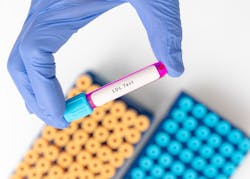Martin/Hopkins method to calculate LDL or ‘bad’ cholesterol outperforms other equations, study shows
In a new large, comprehensive analysis that looked at data from more than 5 million patients, the Martin/Hopkins method developed by Johns Hopkins researchers to calculate low-density lipoprotein (LDL) cholesterol — so-called bad cholesterol — produces higher accuracy rates than the nearly two dozen other available equations.
The findings, published June 19 in Global Heart, reveal that overall, the Martin/Hopkins algorithm correctly classified 89.6% of patients’ LDL cholesterol values, followed by the Sampson method (which was proposed by the National Institutes of Health), which correctly classified 86.3%. The previous gold standard of testing LDL cholesterol levels, the Friedewald method, correctly classified 83.2% of patients. An even larger advantage of the Martin/Hopkins algorithm was seen over other methods for patients with characteristics such low cholesterol and high triglyceride levels.
For the study, researchers looked at data from October 2015 to June 2019, using the Very Large Database of Lipids — a cohort made up of 5,051,467 adult and pediatric patients. The average age was 56, and 53.3% were women. Analyzing 23 identified LDL cholesterol equations, the researchers found that following the Martin/Hopkins equation, those with the most accurate findings were Sampson, Chen (84.4%), Puavilai (84.1%), Delong (83.3%) and Friedewald. The other 17 equations were less accurate than Friedewald, with accuracy as low as 35.1%.
Johns Hopkins Medicine has made the Martin/Hopkins method publicly available, and any lab can use it for free. It can be accessed at LDLcalculator.com.

